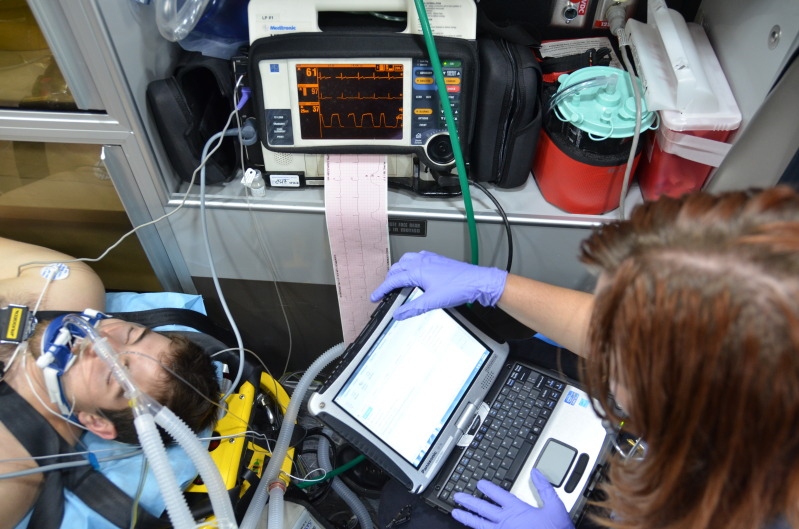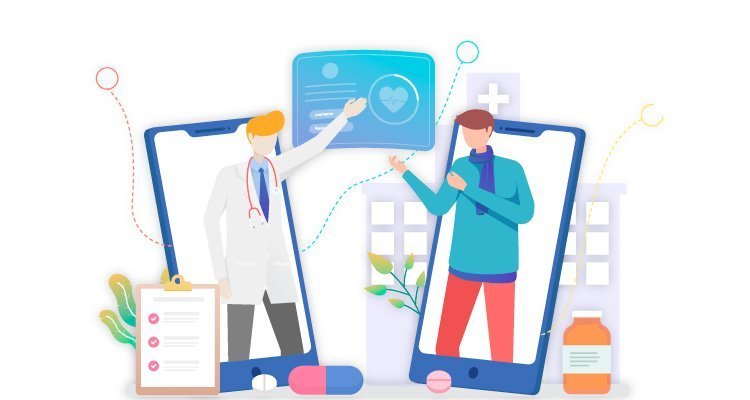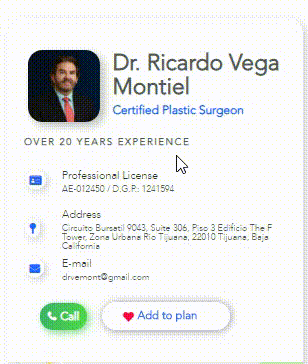Reapertura de Garita San Ysidro
Después de un periodo de cierre las autoridades anuncian la reapertura de la garita en San Diego, California, las operaciones...

Late one recent night, I found myself on the phone with my patient’s brother, trying to explain respiratory failure and Covid-19, the disease caused by the new coronavirus. He had been unable to sleep, he told me, after hours spent online in a futile attempt to understand what might be happening in his sister’s room in our hospital’s intensive care unit.
Many people don’t know what intensive care entails or what would happen if they or a loved one needs to go on a ventilator. While the vast majority of patients with coronavirus will not develop severe respiratory distress and require hospitalization, critical care can be lifesaving but difficult to understand for a patient or family in the midst of an acute illness. With those concerns in mind, I offer a brief explanation of how we are managing patients with life-threatening cases of Covid-19 in intensive care units.
Though Covid-19 often begins as an upper respiratory tract infection, with cough and sore throat, coronavirus can trek down the throat and enter the lower respiratory tract. There, it damages the lung’s tiny air sacs — called alveoli — which are where oxygen enters the blood and carbon dioxide leaves.
As a result of this damage, inflammatory cells and fluid flood the alveoli. This makes it harder for oxygen to travel from the lungs into the bloodstream and deprives the organs of the oxygen that is necessary for them to function. You might hear this referred to as acute respiratory distress syndrome, or ARDS — that’s a term for rapid and extensive lung damage that compromises the body’s oxygen supply during a severe pneumonia.
We make the decision to intubate when the lungs are so damaged that a patient is not getting enough oxygen, because the ventilator can provide more oxygen to the body than a nasal cannula (nose prongs) or a face mask. In order to connect a patient to the ventilator, we place a breathing tube down the throat and through the vocal cords. The ventilator is not a treatment to heal damaged lungs but instead allows the lungs a longer time to recover on their own. While the breathing tube is in place, the patient can’t talk.
We put our patients to sleep with sedating and pain-relieving medications when we insert the breathing tube, and we continue these meds after intubation. Injured lungs are delicate.
To try to minimize further damage, we select settings on the ventilator that deliver small breaths rather than large ones. Research shows that these small breaths can save lives in ARDS. Although these small breaths can be lifesaving, they are uncomfortable for patients who are awake. As a result, patients with ARDS are often deeply sedated in the early hours and days of their illness so that they are able to tolerate the ventilator. We might also give a medicine to temporarily paralyze the patient’s muscles so that they do not move or fight against the ventilator, which could cause more lung damage. Additionally, the breathing tube itself can be uncomfortable, causing gagging, coughing and nausea, so we use sedating medications to improve patient comfort.
We control many factors on the ventilator, including how much oxygen is being delivered. As the patient improves, we are able to decrease the percentage of oxygen supplied by the vent. To make these decisions, we watch the oxygen tracing on the heart rate monitor, in addition to blood samples from an artery in the wrist, called the radial artery, which gives us a direct measure of the oxygen level in the blood.
If — despite intubation and any other Covid-19 specific therapies or clinical trial drugs the patient might be receiving — oxygen levels continue to fall, doctors might talk about something called “prone positioning.” What this means is that the patient lies face down in bed for much of the day.
Some hospitals have a dedicated rotating bed for this; at mine, our nurses gently roll the patient over. This works by changing how blood flows through the lungs, so it doesn’t pool with gravity in the collapsed bottom of the lungs. Though it might sound odd, researchers have studied prone positioning and found that it reduces mortality in severe lung failure.
Your doctors might talk about something called extracorporeal membrane oxygenation, or ECMO. This is essentially a lung bypass machine.
I mention ECMO with caution. While we are newly facing the reality that ventilators are a limited resource, ECMO is far scarcer — some hospitals don’t have any machines at all, while others have a handful at most. And even if there were unlimited machines, ECMO is far from a panacea. It comes with significant risk, including stroke and catastrophic bleeding; however, in very specific cases, it might be the best way to support someone while their lungs heal. If your doctors think ECMO is the next best move, they will talk with the patient’s family members about the risks and benefits before they would go forward.
We monitor the function of every organ at least once a day, and often more frequently than that. Our goal is to make sure that to whatever extent possible, we keep the rest of the organs healthy while the lungs recover — with a particularly careful eye to the heart and kidneys. We also monitor for signs of a new infection and, if we suspect one, we treat quickly and aggressively with antibiotics.
Covid-19 is new. We don’t yet have long-term studies of survivors; however, based on the experience of other survivors with ARDS, we do know that recovery is possible, but it will take a long time, as long as months to years. We also understand that ARDS survivors can face a constellation of issues — anxiety, depression, post-traumatic stress, even cognitive dysfunction — after they recover from their critical illness. As we see more survivors of ARDS from Covid-19, these are questions and issues that we as doctors will need to address.
Sometimes, when improvement is slow and someone has been on the ventilator for two weeks or so, we talk to family members about a procedure called a tracheostomy tube, a plastic tube in the neck that offers a more permanent connection to the ventilator. The breathing tube itself can do damage to the vocal cords if left in for more than about two weeks, so the tracheostomy, or “trach,” allows more time for the lungs to recover, while avoiding damage to the vocal cords. Often this period of recovery also requires a transfer to a facility called a long-term acute care hospital.
For some patients, particularly those who were healthy before, this makes sense. For others, who might be older or more infirm with other health problems, a trach might not be within their goals of care.
Which is why at this point it is so essential to pause. The conversation about traching a patient is an inflection point.
If you are faced with this question, use this time to think about what your loved one would want. Talk to others. What would he or she be willing to tolerate for the hope of gaining more time? Be forthright with the doctors about what you know of your loved one’s goals and values. Ask them to offer you a best-case scenario, a worst-case scenario, and a middle scenario. If you believe that your loved one would not be willing to tolerate the worst-case or even the middle-case scenario, then perhaps it’s time to begin to think about what it would mean not to continue with aggressive interventions. A palliative care consult, aimed at providing maximal comfort, might also be helpful.
It can help enormously to have these conversations with family members in advance so their wishes are known — and ideally to have those wishes in written form — if they do become sick.
Increasingly, to keep patients safe and to limit the spread of coronavirus, hospitals have banned most visitors. This can be heart-wrenching for patients and families — and for us, the doctors.
We will try our best to keep you involved. Tell us about your loved one. Tell us what they like to be called. Tell us about favorite foods and activities, likes and dislikes. If your loved one is not awake, we can play their favorite music — which has also been shown to decrease anxiety in the I.C.U. When they are awake, we will make sure to give you time to chat remotely.
Finally, never apologize for calling. You are scared, maybe alone and quarantined yourself. We are all navigating unknown territory and doing the best that we can.
Daniela Lamas is a critical care doctor at Brigham and Women’s Hospital.
source: https://www.nytimes.com/article/ventilator-coronavirus.html?action=click&module=RelatedLinks&pgtype=Article


Después de un periodo de cierre las autoridades anuncian la reapertura de la garita en San Diego, California, las operaciones...
Baja Health Cluster tuvo la oportunidad de asistir a la Comitiva Binacional Fronteriza, acompañando a la Cámara Regional de Comercio...
We’ve all learned the basics of how to protect ourselves and our loved ones from becoming infected by the virus...


Add the items of your interest in your planner, you can delete or add items anytime. The heart at the right corner shows the amount of items in your planner.

Submit your name, email and additional information you need about the providers. Our Concierge will send you all the information you need.
Address: Mision de Santo Tomas 2812, Zona Urbana Rio (4,69 km)
Tijuana
Available from 9:00 am – 19:00 pm